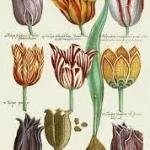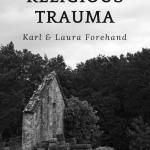 As a teenager, my sister and brothers and I would sometimes read out excerpts from’Fascinating Womenhood (Andelin, 1963) to gafaws of laughter. Amazingly its gone into its 6th print edition and still produces a chuckle (albeit an indignant one) with statements such as:
As a teenager, my sister and brothers and I would sometimes read out excerpts from’Fascinating Womenhood (Andelin, 1963) to gafaws of laughter. Amazingly its gone into its 6th print edition and still produces a chuckle (albeit an indignant one) with statements such as:
“Men admire girlishness, tenderness, sweetness of character, vivacity, and the ability to understand men.” (p. 16-17)
My feminist awakening however occurred as a defiant response to the teaching material in the Young Women programme (in the early 80’s). Divested of any sensitivity toward national, racial, gender diversity, these curriculum materials bespoke a set of cultural assumptions that caused a slew of questions while in my youth. Looking back, I can see that my leaders worked as best as they could with the lesson manuals by sensitively ignoring some of the material or smiling knowingly and understandingly as a result of our protestations. With few words to say about how we felt we were at the same time disempowered by the familiar rhetorical devices of our church leaders reminding us that we were obligated to treat ‘Head Office’ edicts, curriculum material, and discourses as manifestations of the ‘truth’ of our religion.
However, there was some discomfit in assuming ‘in-full’ the ideologies of young LDS femininity. Our reading of American femininity was that it was characterized by a kind of helpless immaturity and dependence, an obsession with physical appearance, naivety born out of limited exposure to a world of complexity, an essentialization of the feminine along with an over-emphasis on our future roles as wives, mothers, and homemakers.
New Zealand femininity looks and behaves differently to American/Utah femininity. New Zealand women were historical products of bush communities whether Māori or settler, where a kind of hardy frontier diva was born who competed successfully at some levels with the colonial masculinities because of the sheer necessity for women to be resourceful, tough minded and physically capable. Where Victorian femininity and Māori femininity intersected is hard to say but there is no doubt that both informed the other, constituting an interesting cocktail of reserve, practicality, competitiveness, and unassuming confidence in New Zealand woman. Reading aphorisms and dictums from the metropol about how our femininity was to be constructed and understood was like wearing our bras on backwards.
Mormonism characteristically communicates its maxims through analogy and story so that when those stories (eg. sweet LDS girls finding peace and consolation from homemaker ‘Mom’s cooking’) didn’t light up my spiritual receptors, but left me with deafening questions lingering over my identity, I was frequently angry that I was left to negotiate these ‘spaces in between spaces’. Something often felt out of sync with my own character, disposition and identity which prayer and scripture study couldn’t wash away, giving place to a deep seated restlessness as a young woman over who I was and what I should be. So on the one hand my feminine activism is constituted because of these fractured Mormon spaces which didn’t entirely seduce me in light of the disjuncture I felt between what the metropol expected of me and what I could legitimately give up as my offering to LDS womenhood ‘out here’.











